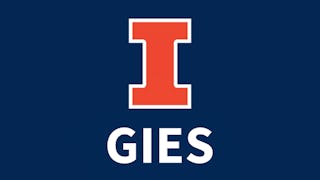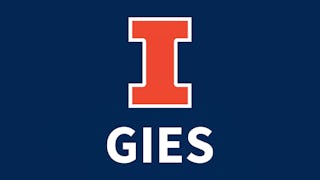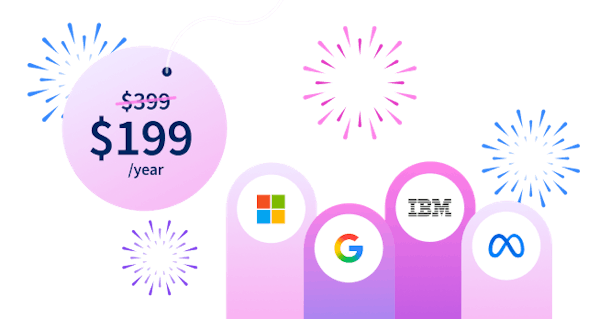This course will provide an in-depth exploration of desktop 3D printing hardware. It will examine the history of desktop 3D printing and demonstrate how 3D printers are made and how they work. This course will also provide step-by-step instructions for how to use and repair a 3D printer. It will also explore the different types of materials that can be 3D printed and will demonstrate how you can create various objects using these tools and materials. Learners who complete this course will be able to successfully operate, repair, and upgrade a 3D printer. In addition, learners who enroll in the course certificate will be able to purchase a desktop 3D printer at a discounted price (provided by Ultimaker).

Gain next-level skills with Coursera Plus for $199 (regularly $399). Save now.

3D Printing Hardware
This course is part of 3D Printing and Additive Manufacturing Specialization


Instructors: Matthew Griffin
16,205 already enrolled
Included with
(111 reviews)
What you'll learn
Understand the history and development of desktop 3D printers
Describe the different types of desktop 3D printers, how they work, what they are used for, and objects they can create
Set-up and prepare a 3D desktop printer for printing a test object
Identify 3D printable objects and prepare them for 3D desktop printing
Skills you'll gain
Details to know

Add to your LinkedIn profile
See how employees at top companies are mastering in-demand skills

Build your subject-matter expertise
- Learn new concepts from industry experts
- Gain a foundational understanding of a subject or tool
- Develop job-relevant skills with hands-on projects
- Earn a shareable career certificate

There are 6 modules in this course
In this welcome module, you will become familiar with the course, your classmates, and our learning environment. In module 1, you will learn about “desktop” 3D printing as opposed to any other sort of 3D printing. You’ll learn this and more by exploring the history behind the creation of desktop 3D printers, overviews of the different types of desktop 3D printers, expose a few of the common misconceptions about them, and explore where you might gain access to them for yourself, including details to help you make an informed decision about the class of desktop 3D printer hardware that suits your specific needs and budget.
What's included
8 videos5 readings4 assignments1 peer review2 discussion prompts
From a distance, the process of 3D printing looks like magic. Step closer and see how all of the core systems and components work together to fabricate real physical objects from digital design files. We make our first of two excursions “under the hood“ to look at the core systems and components that together and in parallel bring function to 3D printers.
What's included
11 videos2 readings4 assignments1 peer review1 discussion prompt
Now that we have an understanding of the controls and motion system. Let’s take a closer look at the extrusion process and what makes 3D printer filament so special. Let’s learn about the materials and processing that they go through when being printed.
What's included
8 videos2 readings3 assignments1 peer review1 discussion prompt
Now that you have looked closely at the fundamental physical systems and components involved with how desktop 3D printers function, and how they can be operated in “normal” situations, it is time to explore the processes involved with preparing digital objects and creating the job files (G-Code, or variant) that will drive the fabrication process.
What's included
8 videos2 readings3 assignments1 peer review1 discussion prompt
Okay, you’ve taken a broad view of desktop machines in the context of the history of 3D printers, very close view of the specific components and systems underneath the hood, and have crossed back-and-forth across the virtual-physical divide -- now it is time to spend some time seeing what it is like to use them!
What's included
5 videos2 readings3 assignments1 peer review1 discussion prompt
In the final module we will then wrap up our exploration of operating desktop 3D printing hardware, covering the moment you hit print to fabricate a part, through to the stages that follow. We’ll wrap up the course with a section highlighting approaches to technical support, troubleshooting, and preventative maintenance, as long as some recommendations for common tools, mods, and add-ons we hope to help you on your own 3D printer experiences that will follow.
What's included
7 videos3 readings3 assignments1 peer review1 discussion prompt1 plugin
Earn a career certificate
Add this credential to your LinkedIn profile, resume, or CV. Share it on social media and in your performance review.
Instructors


Offered by
Explore more from Entrepreneurship
 Status: Free Trial
Status: Free TrialUniversity of Illinois Urbana-Champaign
 Status: Free Trial
Status: Free TrialUniversity of Illinois Urbana-Champaign

University of Illinois Urbana-Champaign
 Status: Free Trial
Status: Free TrialUniversity of Illinois Urbana-Champaign
Why people choose Coursera for their career




Learner reviews
111 reviews
- 5 stars
57.65%
- 4 stars
19.81%
- 3 stars
9.90%
- 2 stars
6.30%
- 1 star
6.30%
Showing 3 of 111
Reviewed on Nov 5, 2019
I was waiting for this course from more than a year, since i had completed all the other courses of this series, hope to learn a lot from this wonderful exciting course, thanks to the instructors.
Reviewed on Aug 21, 2020
Great. But It Was Only Verbally. It was Kind of Tough to Understand.
Reviewed on Aug 19, 2020
ITS A VERY INFORMATIVE AND EXCELLENT COURSE FOR ALL BEGINERS .
Frequently asked questions
Once you enroll for a Certificate, you’ll have access to all videos, quizzes, and programming assignments (if applicable). If you choose to explore the course without purchasing, you may not be able to access certain assignments.
You will be eligible for a full refund until 2 weeks after your payment date. You cannot receive a refund once you’ve earned a Course Certificate, even if you complete the course within the 2-week refund period. View our full refund policy.
Yes! Coursera provides financial aid to learners who would like to complete a course but cannot afford the course fee. To apply for aid, select "Learn more and apply" in the Financial Aid section below the "Enroll" button. You'll be prompted to complete a simple application; no other paperwork is required.
More questions
Financial aid available,
¹ Some assignments in this course are AI-graded. For these assignments, your data will be used in accordance with Coursera's Privacy Notice.





